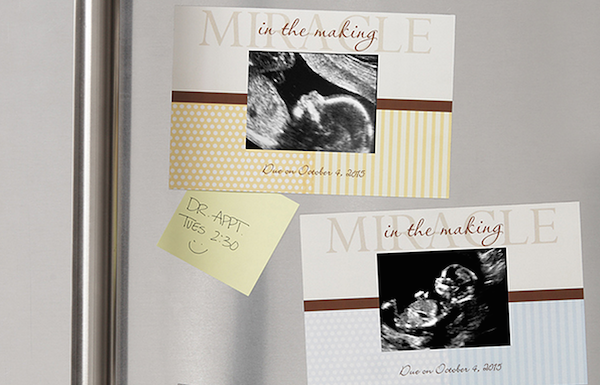In a cover story titled “How Millennial Parents Think Differently About Raising Kids,” Time magazine reporter Katy Steinmetz describes how younger moms and dads are bringing up their kids with a host of values—some more traditional, others much more unconventional.
There is much to trouble religious conservatives in the parenting trends described. From cohabiting couples to “some 700,000 millennial parents” who “identify as lesbian, gay, or bisexual,” today’s little ones are being raised in home environments so at odds with natural law and biblical revelation with that one wonders how, as older children and young adults, they will relate to one another.

It’s certain a common moral language will be lacking. So will any common recognition of what composes a healthy family. Having experienced so much conflict in the home, many will seek to avoid cultural conflict by hiding from social engagement and political activism, leaving the public square potentially less civil and certainly less representative. These invariable outcomes can only mean increased social contention of the kind now plaguing our society.
Ultrasound Exception
Yet one sentence, tucked deeply in the Time article, is arresting: “46 percent of millennial parents said they posted a picture of their youngest child either in the womb or before the baby was one day old.”
Why is this significant? Because younger Americans intuitively understand, as parents always have, that the life growing inside the mother’s body is more than an accumulation of gelatinous tissue. Instead, in watching the ultrasound images projected on a screen, they recognize a living person, developing and small and, in appearance, unlike a full-term baby, but undeniably a human being.
According to the federal Food and Drug Administration:
Ultrasound examinations provide parents with a valuable opportunity to view and hear the heartbeat of the fetus, bond with the unborn baby, and capture images to share with family and friends. In fetal ultrasound, three-dimensional (3D) ultrasound allows the visualization of some facial features and possibly other parts such as fingers and toes of the fetus. Four-dimensional (4D) ultrasound is 3D ultrasound in motion. [Note to the FDA: “Parents” don’t have “fetuses.” They have babies.]
This technology is now so common that ultrasound photos are a routine part of prenatal care. To behold a baby in the womb is to wonder at the magnificence of life and to be humbled by the reality that bearing a child is not a burden but a gift, a blessing beyond words.
Baby’s First Picture
As Bob Morrison has written of the miracle of ultrasound technology:
Expectant mothers often form that indissoluble bond with their child even before he or she is born. In millions of homes, the first family picture on the fridge is often that ultrasound picture. Ultrasound technology has advanced to the point where mothers and, hopefully, fathers can see their unborn child in real time. Something within us is touched, and touched deeply, when we see an unborn child—our own flesh and blood sucking a thumb, yawning, scratching an itch, even holding hands up as if in prayer.
Or as one woman recounted after seeing, for the first time, the little one within her:
I saw my baby, its heart moving all fast. The lady that was doing the ultrasound for me said “hi” and the baby moved its arms. . . . It was such a happy moment, even though the baby was probably just moving its arm. I can't stop replaying it over and over in my head and staring at the pictures of my baby.
This mother knew what to call her little one: Baby. Not Fetus. Baby.
God’s Word tells us that fallen human beings “suppress the truth in unrighteousness” (Rom. 1:18). The word translated “suppress” denotes the idea of holding down or detaining. Though something apparent—something true—is recognized, we scramble to stuff it away, like a Jack-in-the-box forced back into its confined rectangle of tin.
But sometimes even a slight jarring of the box can provoke Jack to pop out again. So it is with truth: we can harden our consciences, but to get to such a point we must first suppress them for a long time. It doesn’t happen overnight. And until that kind of moral scar develops, the truth will keep popping up, uncomfortably and persistently.
Tender Millennial Conscience
The millennial generation is riven by the slashes of a broken culture. Less than half of millennials are reaching the age of 17 with a married mom and dad. Their conflicting perceptions of God, truth, and morality—even of what foods to eat and clothes to wear—vary in levels of intensity. Jonathan Monroe notes:
As millennials become more prominent in the workforce, companies are spending small fortunes researching their interests, from specific jobs to new products. The results of this research provide conflicting answers that typically are reducible to one conclusion: We don’t know.
Yet many of their consciences are tender. And when it comes to the issue of life, they know what they see and what they see, via ultrasound, is a baby. No wonder Jeff Jacoby of The Boston Globe writes:
There [has] been an empathy-driven reaction against abortion among the generation of Americans that grew up in a world of vivid ultrasound images and among the miracles of neonatal medicine that now make it possible even for babies born extremely prematurely to survive and flourish.
Some older Christians seem eager to despair of the future. But in this they underestimate God’s capacity for transformation, one means of which is “the law written on their hearts” (Rom. 2:15), the conscience itself. And in some, that conscience can be triggered—reawakened—simply by seeing the life growing within.
Someone once observed that to despair is to turn your back on God. Let’s be careful not to turn our backs on him—nor on the millennials who so desperately need the help and hope that Christ alone can give.
Editors’ note: This article first appeared at ChristianHeadlines.com.
Is there enough evidence for us to believe the Gospels?
 In an age of faith deconstruction and skepticism about the Bible’s authority, it’s common to hear claims that the Gospels are unreliable propaganda. And if the Gospels are shown to be historically unreliable, the whole foundation of Christianity begins to crumble.
In an age of faith deconstruction and skepticism about the Bible’s authority, it’s common to hear claims that the Gospels are unreliable propaganda. And if the Gospels are shown to be historically unreliable, the whole foundation of Christianity begins to crumble.


































